Home Renovation, Do-It-Yourself …- Ticker Tape
Consumer mentions of “home renovation” rose 40% year over year during the three-month period beginning in March that coincided with the strictest part of the U.S. shutdown. Home renovation and appliance companies continue to reap the benefits.

Photo by Getty Images
Key Takeaways
-
Social sentiment continues to measure a rise in consumer mentions of “home renovations” as the pandemic persists
-
The biggest shift in consumer renovation interest centers around certain rooms of the house, like the kitchen and basement
-
“Big box” retailers including Home Depot (HD) and Lowe’s (LOW) appear to have experienced the greatest benefit from the surge in renovation and do-it-yourself projects, but appliance makers also saw a rise in demand
If you’re going to be stuck sheltering at home for an extended stay, you might as well do it in style, right? That appears to be the sentiment of many who suddenly became all too familiar with the walls and ceilings of their own homes in the COVID-19 lockdown. Change seems inevitable. After all, familiarity breeds contempt.
Home renovation can be costly if you’re the one doing it, but it can be good news for shareholders of companies that sell appliances, tools, and other home products.
LikeFolio found that consumer mentions of “home renovations” rose 40% year over year during the three-month period starting in March 2020. That pretty much coincides with the start and strictest period of the nationwide shutdown (see figure 1).
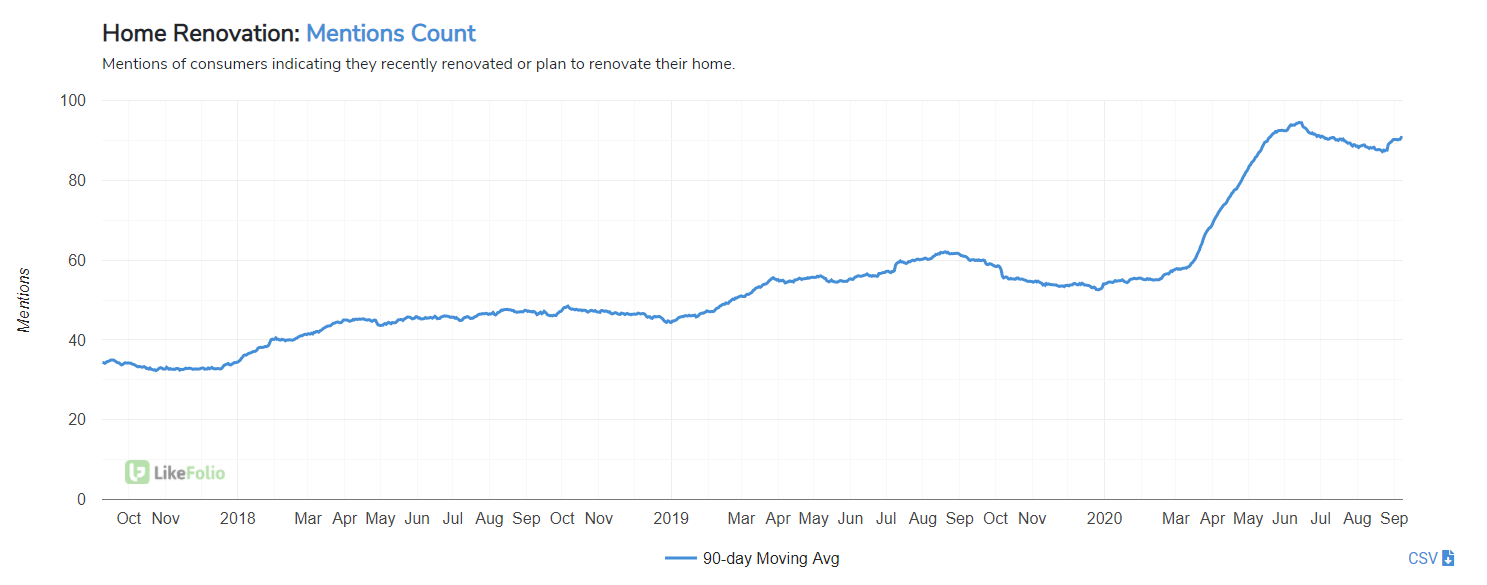
FIGURE 1: HOME RENOVATION MENTIONS RISE. Mentions of consumers interested in renovating their homes shot up 40% year over year. Data source: LikeFolio.
With an abundance of time and a propensity for prolonged boredom, a number of people seemed to have caught the “do-it-yourself” (DIY) bug, at least enough to venture a few major upgrades, add some pizzazz to their decor, or just fix a few things around the house that were off-kilter.
In light of this trend, who were the big industry “winners” benefiting from this surge in demand and moment of DIY self-discovery? Judging from LikeFolio’s data, they appeared to be:
- Traditional big-box retailers like Home Depot (HD) and Lowe’s (LOW)
- Appliance and tool manufacturers such as Stanley Black & Decker (SWK) and Whirlpool (WHR)
- Furniture and home decor companies like Wayfair (W) and the At Home Group (HOME)
Overall, every area of the house registered a year-over-year uptick in renovation mentions as consumers were stuck at home and desperate for something to do. LikeFolio found that the top three renovations mentions included the living area, basement, and kitchen. Let’s start with the kitchen.
The Kitchen and the Fixin’
The shift in interest for kitchen renovations increased 48% in the last three-month period versus the prior year (see figure 2). It seems that having to cook most meals at home is making people tired of food prep in the same old grease-stained oven.
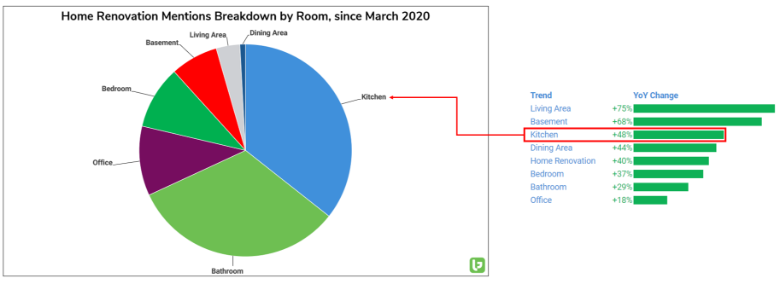
FIGURE 2: ITCHIN’ FOR A BETTER KITCHEN. Kitchen renovation mentions are rising quickly during the pandemic. And what’s the one kitchen appliance that can either be your best friend or most inconvenient frenemy? Your dishwasher. Data source: LikeFolio.
Battling for Home Court Advantage
HD and LOW were neck and neck in the home improvement battle, with LOW taking a slight lead in regard to the growth rate in demand in Q2 (+124% versus Home Depot’s +86%), according to LikeFolio. Both companies’ Q2 earnings topped most analyst expectations, with LOW packing a nice blowout punch that gave its shares a slight boost.
Looking back, the earnings numbers seem to validate this surge in the purchase intent data that LikeFolio detected in early March, suggesting, if anything, that home improvement shifted from a luxury to an “essential” and immediate need (see figure 3).
“During the quarter we saw customers take on projects throughout their homes,” said Craig Menear, CEO of Home Depot, on a call with analysts after the company reported earnings in August. “From deck building, to painting projects, landscape work, and home repairs due to increased wear and tear…clearly our customer is engaged with home improvement in a meaningful way.”
Menear expects this focus on home projects to continue, he said, “Our recent customer survey work tells us that customers have a continued willingness to take on both indoor and outdoor projects in the near term.”
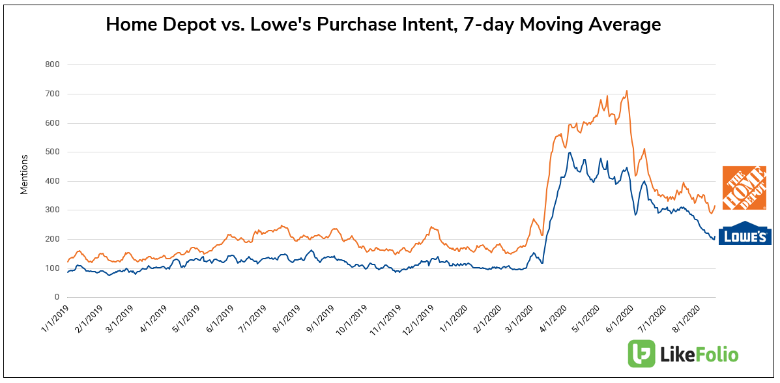
FIGURE 3: BIG BOX RETAIL INTEREST JUMPS ON THE HOME FRONT. Visits to Home Depot and Lowe’s became “essential” during the lockdown. Customer purchase intent mentions spiked in early March. Data source: LikeFolio.
Bigger Boys, Bigger Toys: Home Appliance Demand Surges
Although big box retailers are natural beneficiaries of the home renovation bug, the tools and toys that fill and garnish each room are necessary too.
Machines can’t cook up a great meal (microwaved meals don’t count), but they can sure wash your dishes and utensils. LikeFolio data recorded a 43% year over year jump in WHR purchase intent mentions in the last three months.
Interest in appliances continued to buzz at a higher rate despite its decline from the huge initial surge, remaining elevated year-over-year. Shares of WHR could be reflecting this (see figure 4).
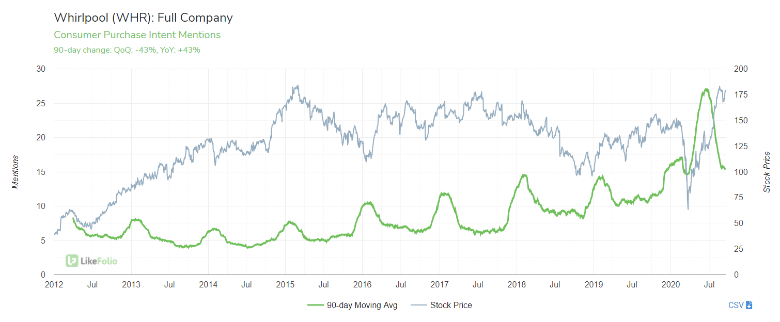
FIGURE 4: DOING THE DISHES. Nobody likes doing the dishes, hence the noted increase in consumer demand for Whirlpool appliances. Data source: LikeFolio.
And consumers who didn’t splurge on big-ticket appliances were able to afford a handful of new “toys” to renovate their homes. One of the most varied “toy” vendors in the United States is Black & Decker. Think power tools, accessories, hardware, and anything else that can be used for home improvement.
Shareholders dumped the stock (along with plenty of others) during the COVID-19 crash in March, bringing SWK’s share value down to around $70 from $173. Then, shares roared back as many DIYers looked to scoop up power tools and other toys. That demand, as with WHR, was up 54% year over year, according to LikeFolio data (see figure 5).
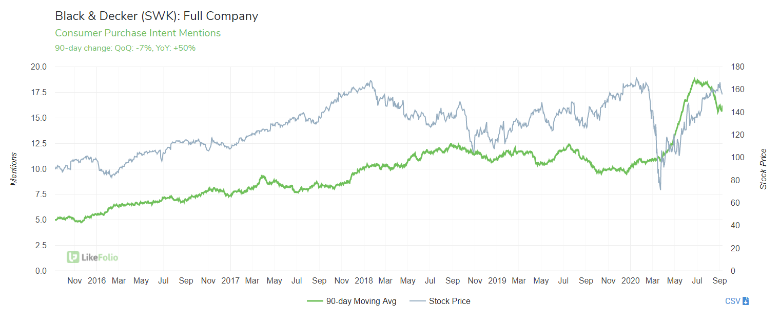
FIGURE 5: TOOLS ARE THE NEW TOYS. Black & Decker offers a wide range of products that help people make small or big improvements in their homes. LikeFolio saw a +54% year-over-year increase in Black & Decker purchase intent mentions in the last 90 days. Data source: LikeFolio.
A (Comfortable) Room with a (Nicer) View
Now we get to the style factor. Few things in life get by on pure functionality alone. If we have to look at it or sit on it, day in and day out, we’ve got problems if it’s an eyesore or just plain uncomfortable. Sometimes it takes being stuck at home to realize just how good or how bad your sense of interior design really is.
We can guess that for many the appearance of home got quite old really fast, as the social media space was abuzz with mentions of furniture and home decor purchases at Wayfair (W) and At Home (HOME).
Here’s something that investors might want to pay attention to. Looking at the data for both companies, you can see how share demand rose to meet the sharp consumer demand tracked by LikeFolio (see figures 6 and 7).
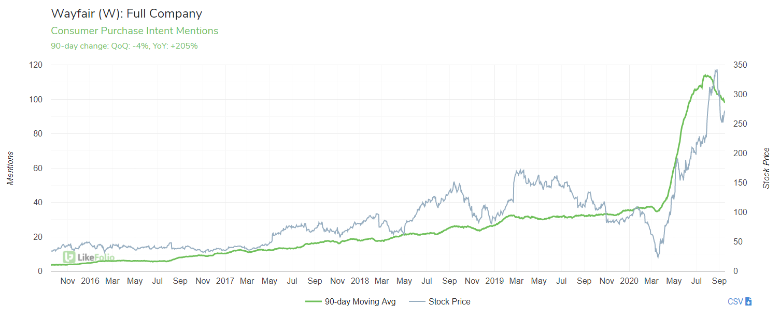
FIGURE 6: ALL ABOUT STYLE AND ELEGANCE. Social media buzz for Wayfair* hits an astounding +205% year-over-year high. Data source: LikeFolio. *LikeFolio regularly examines tweets for non-organic mentions on high volume dates, and resolves the data if an event falsely inflates statistics for the day. In July 2020, an event was noted (involving tweets like this) and accounted for, so the chart displayed is an accurate depiction of true consumer demand verses politicized content.
But At Home’s share price is still trailing behind its customer intent mentions. Looking at the correlation between sentiment (a leading indicator) and share price (which can agree or disagree with sentiment), this gap could potentially present an opportunity for investors (see figure 7).
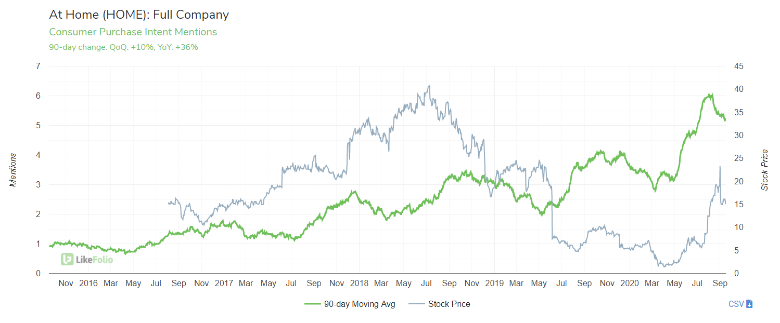
FIGURE 7: EXCELLENT FURNITURE, AN ESSENTIAL FACTOR. As purchase intent mentions for At Home advanced +36% year-over-year, share prices still trailed behind the demand estimations that may (or may not) fuel it in the months to come. Data source: LikeFolio.
Investors looking for opportunity with HOME shares can get them more cheaply now as shares fell double digits on September 2 after HOME reported quarterly revenue of $515.2 million, right near the average Wall Street estimate. Earnings per share of $1.41 topped estimates, but At Home declined to give any guidance, citing the pandemic. Lately, many companies that didn’t offer guidance saw their shares pummeled.
Despite the stock setback, there were some positives investors can file away from the earnings report. “We delivered the best quarter in the company’s history in terms of comparable store sales,” said CEO Lee Bird in the company’s press release.“ Consumers continue to spend time and money on their homes, including on decorating and organizing their homes, home offices, and kitchen spaces,” Bird said later in the company’s earnings call. “We see this trend persisting for some time.”
We’ll have to see how things go for HOME in the current and final quarters of the year, but some of that could be contingent on continued overall economic recovery. U.S. gross domestic product (GDP) dropped a worst-ever 31.7% in the second quarter of 2020, according to the U.S. government.
However, a recent note from research firm CFRA predicts a 32.5% advance in GDP for the third quarter. Also, the Federal Reserve Bank of Cleveland recently reported that home renovation activity has been strong in the most recent reporting period “as more homeowners expect to work from home for an extended time.” All this could be helpful for big-box and appliance stores in coming months.
The Bottom Line
The advantage to using consumer insights to inform your investing decisions is to consistently and frequently monitor the data in as close to real time as possible. Purchase intent mentions can potentially indicate surges in buying interest. LikeFolio’s data aims to provide ahead-of-the-curve insights, which can be useful when forecasting investment prospects.
Andy Swan is not a representative of TD Ameritrade. TD Ameritrade and LikeFolio are separate and unaffiliated companies. The views and opinions expressed in this article are are solely those of the author. Social and consumer sentiment data should not be used alone when making investment decisions. Please consult other sources of information and consider your individual financial position and goals before making an independent investment decision.
